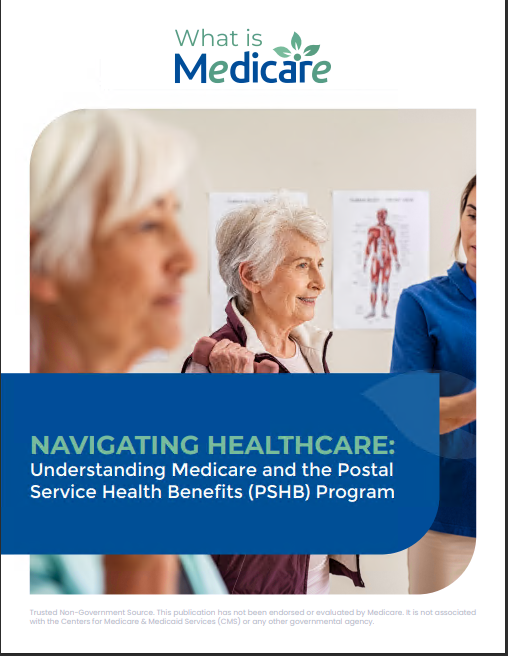Key Takeaways
-
New changes to Medicare Part D in 2025, including a $2,000 cap on out-of-pocket prescription drug costs, aim to make medication expenses more predictable and manageable for beneficiaries.
-
Understanding the updated rules and timelines can help you take full advantage of cost-saving opportunities and plan for your healthcare needs effectively.
The New Face of Medicare Prescription Drug Coverage in 2025
Starting in 2025, Medicare Prescription Drug Coverage (Part D) will undergo significant changes aimed at reducing financial burdens for enrollees. The introduction of a $2,000 out-of-pocket cap and new payment options are set to transform how you manage your medication costs. Let’s break down these changes and how they might benefit you.
What’s Changing in 2025?
The $2,000 Out-of-Pocket Cap
One of the most impactful updates to Medicare Part D is the introduction of a $2,000 annual cap on out-of-pocket prescription drug costs. Previously, there was no limit, leaving many beneficiaries exposed to potentially high expenses. Here’s how this change works:
-
Applies to all Part D plans: Whether you’re enrolled in a stand-alone Part D plan or a Medicare Advantage plan with drug coverage, this cap ensures you won’t spend more than $2,000 on covered medications annually.
-
Starts after the deductible: The cap begins once you’ve met your plan’s deductible, which can vary but will not exceed $590 in 2025.
Payment Installments for Costly Drugs
To help spread the cost of expensive prescriptions, Medicare will introduce a new payment option. You’ll be able to pay for medications in smaller, more manageable installments over the course of the year, easing immediate financial strain.
Key Dates to Keep in Mind
Open Enrollment Period
The Medicare Open Enrollment Period remains the same: October 15 to December 7 each year. During this time, you can:
-
Join a new Medicare Part D plan.
-
Switch from one Part D plan to another.
-
Enroll in a Medicare Advantage plan that includes drug coverage.
Changes made during this period take effect on January 1 of the following year, so any adjustments for 2025 need to be finalized during the 2024 Open Enrollment.
Initial Enrollment Period for New Beneficiaries
If you’re turning 65, your Initial Enrollment Period (IEP) is a 7-month window surrounding your birthday (3 months before, the month of, and 3 months after). Failing to enroll during this period could result in penalties.
Special Enrollment Periods
Certain life events, like losing employer-sponsored drug coverage or moving out of your plan’s service area, may qualify you for a Special Enrollment Period to make changes outside the standard timelines.
How the New Rules Save You Money
Predictable Costs
With the $2,000 cap, you’ll no longer face unlimited costs for essential medications. This change provides financial stability and helps you budget for healthcare expenses more effectively.
Reduced Penalties
For those who’ve previously delayed enrolling in Part D, the new system may offer a fresh opportunity to join a plan without the looming fear of endless high costs.
Payment Flexibility
Spreading out payments for expensive medications makes it easier to afford treatments without sacrificing other financial priorities.
Choosing the Right Plan Under the New Rules
Compare Costs
Each plan has different premiums, deductibles, and formularies (the list of covered drugs). Make sure you:
-
Check if your medications are included in the plan’s formulary.
-
Confirm the total estimated costs, including the new cap and deductible.
Evaluate Network Pharmacies
Using in-network pharmacies can save you money. Double-check whether your preferred pharmacy is included in your plan’s network.
Consider Additional Benefits
Some plans may offer enhanced drug coverage beyond the $2,000 cap. Explore all available options to find the best fit for your needs.
The Role of Medicare’s Donut Hole in 2025
The coverage gap, also known as the “donut hole,” will continue to shrink in its financial impact. While the gap technically remains part of the coverage structure, the new $2,000 out-of-pocket cap essentially eliminates its burden on beneficiaries. Once your spending reaches $2,000, catastrophic coverage kicks in, and your costs are covered at 100%.
Preparing for the 2025 Changes
Review Your Current Coverage
Take a close look at your existing Medicare Part D plan. Ask yourself:
-
Are my medications covered?
-
How much am I currently spending on prescription drugs?
-
Will my plan still be cost-effective under the new rules?
Plan for Open Enrollment
Use the Medicare Plan Finder tool to compare options during Open Enrollment. Start early to ensure you have enough time to review and understand your choices.
Budget for Premiums and Deductibles
While the $2,000 cap limits out-of-pocket costs, you’ll still need to budget for monthly premiums and annual deductibles. Planning ahead can help you avoid surprises.
Common Questions About the New Rules
Will Everyone Benefit from the $2,000 Cap?
Yes, all Medicare Part D enrollees will benefit, regardless of their plan type. However, the exact savings depend on how much you currently spend on prescriptions.
Do I Need to Take Any Action to Qualify for the Cap?
No action is required; the cap is automatically applied to all plans. However, you should review your plan to ensure it aligns with your needs.
Can I Still Use Coupons or Assistance Programs?
Yes, manufacturer coupons and assistance programs may still be used, but the details depend on your specific plan. These programs can further reduce your out-of-pocket costs within the cap.
The Bigger Picture: What These Changes Mean for You
Medicare’s 2025 updates reflect a broader effort to improve healthcare affordability. By capping out-of-pocket costs and introducing flexible payment options, Medicare aims to reduce the financial stress associated with managing chronic conditions and accessing necessary treatments. These changes make it easier for beneficiaries to focus on their health rather than their expenses.
Planning Ahead for a Stress-Free 2025
Staying informed and proactive is the best way to maximize your Medicare benefits. By understanding the new rules and adjusting your plans accordingly, you can take full advantage of these cost-saving measures. Make sure to:
-
Review your plan annually.
-
Keep track of key enrollment dates.
-
Consult with a Medicare expert if you have questions.
With these changes, 2025 promises to be a turning point in making prescription drug costs more manageable for millions of Americans.
A New Era of Affordable Medication Awaits
These updates to Medicare Part D offer a glimpse into a future where managing your health doesn’t mean breaking the bank. Take the time to explore your options, understand the new rules, and ensure you’re well-prepared for the year ahead. Your health and wallet will thank you.










